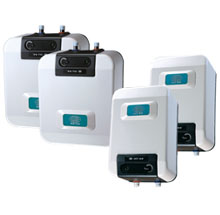
Electric Heaters Resources
- Home
- Efficient Electric Heaters
- Electric Heaters for Different Rooms
- Outdoor Electric Heaters
- Portable Electric Heaters
- 12 Volt Electric Heaters
- 220 Volt Heater
- 3 Phase Electrical Heater
- Above Ground Pool Electric Heater
- Antique Electric Heaters
- Baseboard Electronic Heaters
- Bathroom Electric Heaters
- Best Electric Heaters
- Buy Electric Heaters
- Car Electric Heaters
- Ceiling Electric Heaters
- Ceiling Mounted Electric Heaters
- Ceramic Electric Heaters
- Cheap Electric Heaters
- Commercial Electric Heaters
- Compact Electric Heaters
- Convection Electric Heaters
- DC Electric Heaters
- Economical Electric Heaters
- Efficient Electric Heaters
- Electric Heater Reviews
- Electric Heater With Thermostat
- Fahrenheat Electric Heaters
- Fan Forced Electric Heaters
- Fireplace Electric Heaters
- Flat Panel Electric Heaters
- Floor Electric Heaters
- Forced Air Electric Heaters
- Free Standing Electric Heaters
- General Electric Heaters
- Greenhouse Electric Heaters
- Halogen Electric Heaters
- Hanging Electric Heaters
- Heavy Duty Electric Heaters
- High Efficiency Electric Heaters
- Home Electric Heaters
- In Wall Electric Heaters
- Indoor Electric Heaters
- Industrial Electric Heaters
- Infrared Electric Heaters
- Infrared Electric Heater Reviews
- Large Electric Heaters
- Large Room Electric Heaters
- Low Wattage Electric Heaters
- Marine Electric Heater
- Mini Electric Heaters
- Non Electric Heaters
- Oil Electric Heaters
- Oil Filled Electric Heaters
- Overhead Electric Heaters
- Panel Electric Heaters
- Patio Electric Heaters
- Plug in Electric Heaters
- Process Electric Heaters
- Radiant Electric Heaters
- Recessed Electric Heaters
- Residential Electric Heaters
- RV Electric Heaters
- Safe Electric Heaters
- Small Electric Heaters
- Small Portable Electric Heaters
- Solar Electric Heaters
- Spa Electric Heaters
- Space Electric Heaters
- Swimming Pool Electric Heaters
- Toe kick Electric Heaters
- Tubular Electric Heaters
- Types of Electric Heaters
- Used Electric Heaters
- Vintage Electric Heaters
- Wall Electric Heaters
- Warehouse Electric Heaters
- Electric Heaters FAQ
Residential Electric Heaters
Almost every home in America owns an electrical heating device. A home without residential electric heaters would be an unbearable place to live in during the cold winter months. Because a house would consist of two or more rooms, there is a possibility that there is more than one residential electric heater. Therefore, it is vital that we attempt to use electricity wisely in order to minimize our monthly energy bills.
The most popular type of residential electric heaters is electric resistant heating. Electric resistance heating is more energy efficient as it converts almost 100% of the electricity into heat as compared to combustion heaters such as gas, oil furnace, and propane which turns 30% of the fuel energy into heat. Electric resistance heaters are available in the form of electric wall heaters, electric baseboard heaters, electric radiant heaters and etc.
Reduce Consumption
It does not matter whether you are using a resistance heater or radiant heater. It does not matter whether your heater is mounted on the wall or recessed into the ceiling. There are many methods of reducing energy consumption of residential electric heaters.
Maximizing insulation in and around the house would keep the heat generated by the residential electric heaters within the home and also avoid cold drafts from coming into the house. Usually, windows and patio doors are insulated because any gaps or voids can cause heat to escape.
Save on Heating Costs
Practicing zone heating helps you cut costs by keeping one room warm as opposed to keeping the entire house warm. Living rooms and bedrooms which are occupied by the family for most of the time can be kept warm at all times whereas areas like the study or kitchen can remain cooler as it is not used regularly. To do this, portable residential electric heaters would be most convenient. Besides that, zone heating can also be achieved by controlling the residential electric heaters with a thermostat.
In addition to insulation and zone heating, reducing air leakage is another way to save on heating costs. This means that the walls of your home have to be airtight and yet still able to provide ventilation into the house. Creating an airtight home can be achieved by encapsulating the house with air infiltration barriers as well as installing sealants and gaskets. Air can also leak through fireplaces, irregular roof lines, high ceilings and etc.
On top of that, air ducts also causes air leakage. Air is constantly escaping through furnaces and ducts which are not insulated. Moreover, the joints and links between each section of the ducts can cause about 30% air leakage. Ultimately, reducing any possibility of air leakages will ensure a more comfortable and energy efficient home. This importance of this matter has only been surfaced recently and today the construction industry realized that new ducts have to be sealed with commercial standard duct mastic when they are being installed. For existing duct systems, it would be wise to hire an experienced professional to perform a leak test and seal the areas of the duct which is prone to air leakages
